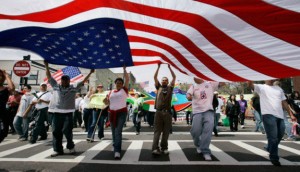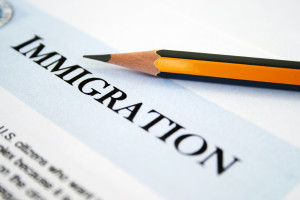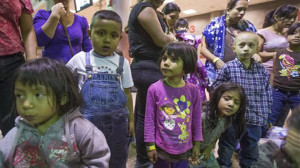 Immigrating to the United States of America is not made easy by all of the laws an bureaucracies put in place. Many people in the United States are against amnesty and other forms of citizenship that allow illegal immigrants to stay in the United States. Their rational being that if the illegal immigrants want to stay in the United States, they should apply for a visa and wait until they are legally approved. This makes sense at first glance, but within the constructs of the law is an extremely untimely bureaucratic process that gives immigrants little hope of living legally in the United States anytime soon.
Immigrating to the United States of America is not made easy by all of the laws an bureaucracies put in place. Many people in the United States are against amnesty and other forms of citizenship that allow illegal immigrants to stay in the United States. Their rational being that if the illegal immigrants want to stay in the United States, they should apply for a visa and wait until they are legally approved. This makes sense at first glance, but within the constructs of the law is an extremely untimely bureaucratic process that gives immigrants little hope of living legally in the United States anytime soon.
A recent study done by Forbes suggests that a computer programer from India has to wait 35 years, on average, if they want to live “legally” in the United States. Someone from Mexico with a high school diploma has to wait an average of 130 years! Complex rules and regulations are creating a difficult situation for both immigrants and the United States.
Studies show that immigrants make up most of the founders in Silicon Valley as they invent things twice as fast as native-born Americans. A lot of Sillicon Vally tech startups are feeling handcuffed by the US immigration policy as it becomes increasingly difficult to hire highly skilled immigrants. The tech startup industry is all about speed and efficiency. The US immigration process is too slow for the hiring processes of these growing startups, which limits their hiring abilities and thus limits competition.
Low skill and high skill is not a factor in the start-up rat race. Labor is a spectrum where all levels of labor are needed to keep up in the industry. These startup companies are hoping that the immigration laws become more relaxed so that they can hire who they need to hire.
 “What do the American people want immigration to do for the United States”[1]? According to George Borjas, one of the leading labor economists who specialize in immigration issues, this should be the fundamental question in the modern immigration debate. Technically, everyone who now lives in the United States has some ancestor that immigrated to the United States from abroad and there was a point in time where there was no immigration policy. As the United States became wealthier and wealthier, an immigration policy became necessary to keep overpopulation and major wealth divisions from happening. Typically, when policy makers of the world focus on the immigration debate, they seem to use economics as their main basis for policy change. This is how immigration policy is implemented in most countries. If immigration were to make the native people economically worse off, why wouldn’t a country impose a strict immigration policy? On the other hand, if immigration were to make the native population economically better off, why wouldn’t a country impose a more lose immigration policy? This paper will describe the political forces in Canada and the United States that led to their different historic approaches to immigration, and then analyze their respective current policies in both political and economic terms.
“What do the American people want immigration to do for the United States”[1]? According to George Borjas, one of the leading labor economists who specialize in immigration issues, this should be the fundamental question in the modern immigration debate. Technically, everyone who now lives in the United States has some ancestor that immigrated to the United States from abroad and there was a point in time where there was no immigration policy. As the United States became wealthier and wealthier, an immigration policy became necessary to keep overpopulation and major wealth divisions from happening. Typically, when policy makers of the world focus on the immigration debate, they seem to use economics as their main basis for policy change. This is how immigration policy is implemented in most countries. If immigration were to make the native people economically worse off, why wouldn’t a country impose a strict immigration policy? On the other hand, if immigration were to make the native population economically better off, why wouldn’t a country impose a more lose immigration policy? This paper will describe the political forces in Canada and the United States that led to their different historic approaches to immigration, and then analyze their respective current policies in both political and economic terms. In a recent article by the New York Times, an immigration law has just been recently passed to curb child trafficking. One of the last things that George W. Bush did as president was sign one final piece of legislation. “This is a piece of legislation we’re very proud to sign” White House spokesman, Tony Fratto, told to reporters on December 23, 2008 as the president signed the William Wilberforce Trafficking Victims Protection Reauthorization Act of 2008. This program was named after the 19th century British abolitionist and the program will be very effective around the world in trying to stop trafficking.
In a recent article by the New York Times, an immigration law has just been recently passed to curb child trafficking. One of the last things that George W. Bush did as president was sign one final piece of legislation. “This is a piece of legislation we’re very proud to sign” White House spokesman, Tony Fratto, told to reporters on December 23, 2008 as the president signed the William Wilberforce Trafficking Victims Protection Reauthorization Act of 2008. This program was named after the 19th century British abolitionist and the program will be very effective around the world in trying to stop trafficking.